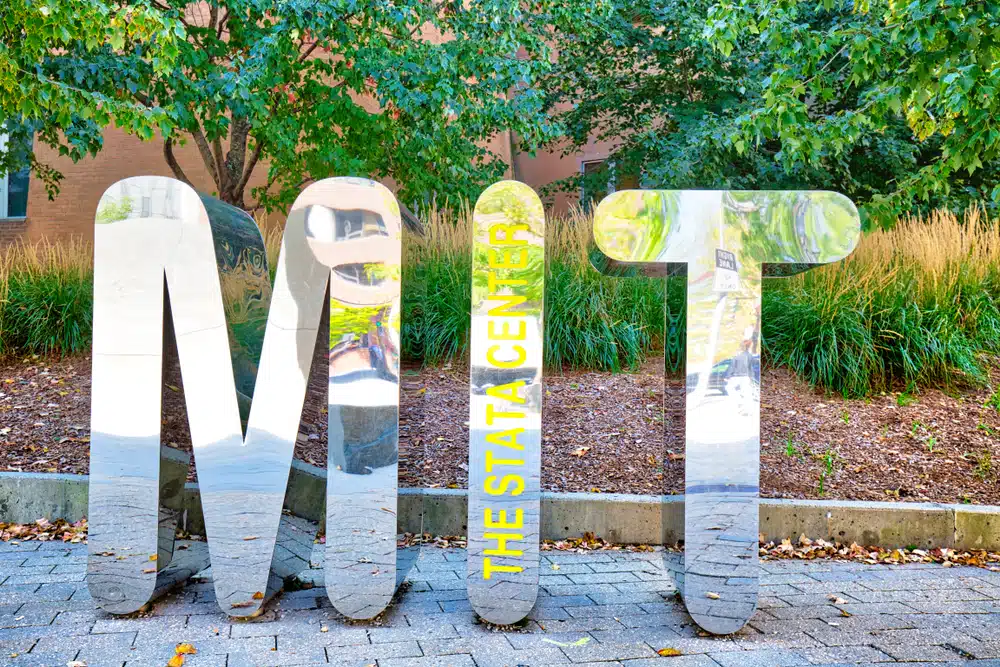How do get off the MIT waitlist for 2025?
Have you been waitlisted by the Massachusetts Institute of Technology (MIT) for the 2025 admission cycle? Don’t lose hope just yet! Being on the waitlist means that the admissions office at MIT sees potential in your application and wants to consider you further. In this article, we will guide you through the process of increasing your chances of getting off the waitlist and securing a spot in MIT’s incoming class. Let’s dive in and explore the steps you can take!
Understanding the MIT Waitlist Process for 2025
Before we delve into the strategies, let’s first examine how the waitlist process works at MIT. Being waitlisted means that while you are not admitted initially, you are still being considered for acceptance if spots become available later on. MIT’s waitlist is not ranked, but rather categorized into different groups. Understanding these waitlist categories can help you gauge your chances of getting off the list.
The Basics of College Waitlists
Waitlists are common at many colleges and universities. They serve as a backup plan if the initial admitted students do not accept their offers of admission. Colleges often use waitlists to maintain their target enrollment numbers and ensure a balance of diversity in their incoming class.
Specifics of MIT’s Waitlist Policy for 2025
At MIT, being waitlisted is not the end of the road. The admissions committee evaluates waitlisted candidates holistically, considering the strength of their applications and potential fit for MIT’s community. It is essential to understand that being on the waitlist means MIT is still interested in you, so don’t lose hope!
When it comes to the waitlist process at MIT, there are a few key factors to consider. First and foremost, the number of students admitted from the waitlist varies from year to year. While some years may see a significant number of waitlisted students being accepted, other years may have very few or none at all. This unpredictability can make the waitlist process both exciting and nerve-wracking for applicants.
MIT’s waitlist is divided into different categories, each with its own level of priority. The categories include Early Action deferred applicants, Regular Action deferred applicants, and students who were not initially offered admission but were placed directly on the waitlist. The admissions committee carefully reviews each applicant within these categories, taking into account their academic achievements, extracurricular involvement, and potential contributions to the MIT community.
One important thing to note is that being on the waitlist does not guarantee admission. It is still a highly competitive process, and the number of spots available for waitlisted students is limited. However, being on the waitlist does indicate that the admissions committee sees potential in your application and believes you would be a valuable addition to the MIT community.
While on the waitlist, it is crucial to keep the admissions office updated with any significant achievements or developments in your academic or extracurricular pursuits. This could include receiving awards, participating in research projects, or taking on leadership roles in your school or community. By demonstrating continued interest and growth, you can strengthen your case for admission.
Additionally, it is essential to maintain a positive attitude and continue exploring other options. While waiting for a decision from MIT, you should still actively pursue other colleges and universities that have offered you admission. It is always wise to have backup plans in place and keep your options open.
Remember, the waitlist process can be a rollercoaster of emotions, but it is crucial to stay optimistic and focused on your goals. Whether you ultimately receive an offer of admission from MIT or choose to attend another institution, your dedication, and hard work will undoubtedly lead you to success in your academic journey.
Preparing Your MIT Waitlist Letter for 2025
One crucial step in trying to secure a spot off the waitlist is to write a compelling waitlist letter. This letter is your opportunity to provide additional information and express your continued interest in attending MIT.
When crafting your waitlist letter, be sure to highlight any significant achievements or experiences since submitting your application. By demonstrating growth and progress, you can strengthen your case for admission. For example, you could discuss how you participated in a research project that allowed you to further develop your skills in your chosen field of study. This experience not only showcases your dedication and passion but also demonstrates your ability to contribute to the MIT community.
Additionally, express your genuine interest in MIT and explain why you believe it is the best fit for your academic and personal goals. You can delve into specific programs, courses, or professors that align with your interests and aspirations. For instance, you could mention how MIT’s renowned engineering program perfectly aligns with your passion for innovation and problem-solving, and how you hope to contribute to groundbreaking research in the field.
What to Include in Your Letter
While expressing your continued interest and recent accomplishments is important, it is equally crucial to demonstrate your understanding of MIT’s values and culture. Share how you envision contributing to the community and taking advantage of the unique opportunities available at MIT. For example, you could discuss your desire to join a particular student organization that aligns with your interests, or how you plan to engage in community service initiatives to make a positive impact both on and off campus.
Consider asking a teacher, mentor, or counselor who knows you well to write a letter of support to accompany your waitlist letter. Their perspective can provide additional insights into your character and potential for success at MIT. They can highlight specific instances where you have demonstrated leadership skills, resilience, or a strong work ethic. This additional letter of support can further strengthen your case and showcase the qualities that make you an ideal candidate for MIT.
Remember, your waitlist letter is an opportunity to showcase your growth, passion, and commitment to MIT. Use this chance to paint a vivid picture of who you are as a student and as an individual, and how you will contribute to the MIT community. Good luck!
Enhancing Your Application Profile in the MIT Waitlist 2025
While preparing your waitlist letter, it is also essential to work on enhancing your overall application profile. Showcasing improvement and growth can significantly impact the admissions committee’s decision.
When it comes to improving your application, there are several areas you can focus on. One of the most critical aspects is your academic credentials. To strengthen your application, consider taking on challenging coursework or pursuing independent research in your field of interest. By demonstrating your commitment to academic excellence and intellectual curiosity, you can impress the admissions committee and show them that you are constantly seeking to expand your knowledge and skills.
Furthermore, if your grades have improved since submitting your application, it is crucial to update MIT by sharing your most recent transcript. This will provide the admissions committee with concrete evidence of your academic growth and improvement, reinforcing the idea that you are a dedicated and motivated student.
Improving Your Academic Credentials
One way to strengthen your application is by focusing on your academics. Consider taking on challenging coursework or pursuing independent research in your field of interest. If your grades have improved since submitting your application, be sure to update MIT by sharing your most recent transcript.
Additionally, you can also seek out opportunities to engage with professors or professionals in your desired field. This could involve attending conferences, participating in workshops, or even reaching out to experts for informational interviews. By actively seeking out these experiences, you not only demonstrate your passion for your chosen field but also show the admissions committee that you are proactive and willing to go above and beyond to pursue your academic interests.
Another way to enhance your academic profile is by seeking out leadership roles within your school or community. Whether it’s becoming the president of a club, organizing a community service project, or starting your own initiative, taking on leadership responsibilities showcases your ability to take charge and make a positive impact. These experiences can provide valuable insights and skills that will benefit you both academically and personally.
Showcasing Your Extracurricular Achievements
Extracurricular activities can also demonstrate your passion, leadership skills, and commitment to making a difference. If you have taken on any notable projects or received recognition in your extracurricular activities, update MIT on these accomplishments. Highlight how these activities align with MIT’s mission and values.
Furthermore, consider seeking out opportunities to engage in community service or volunteer work. Not only does this show your commitment to giving back, but it also allows you to develop important skills such as empathy, teamwork, and problem-solving. These experiences can help you stand out and demonstrate your well-roundedness as an applicant.
Lastly, don’t forget to showcase any unique talents or hobbies you have outside of academics. Whether it’s playing a musical instrument, participating in a sport, or engaging in creative endeavors, these activities can provide insights into your personality and interests. They also demonstrate your ability to manage your time effectively and pursue your passions alongside your academic commitments.
Maintaining Communication with the Admissions Office
When it comes to the college admissions process, staying in touch with the admissions office can be crucial. While it is important to be proactive, it is equally important to respect MIT’s guidelines for communication. Here are some points to consider when reaching out to the admissions office:
When and How to Contact the Admissions Office
MIT has specific guidelines regarding communication with waitlisted students. Typically, they will provide instructions on when and how to provide updates on your achievements or circumstances. It is important to adhere to these guidelines to show your respect for the admissions office’s time and decisions.
When it comes to timing, it’s essential to be patient. The admissions office receives a high volume of inquiries, so it’s important to give them enough time to respond to your initial application before reaching out again. However, if you have significant updates or changes in your circumstances, it may be appropriate to reach out sooner.
As for the method of communication, MIT usually prefers email as the primary mode of contact. This allows for clear and documented communication between you and the admissions office. Make sure to use a professional and respectful tone in your emails, addressing the admissions officers by their proper titles and providing all necessary information in a clear and concise manner.
What to Discuss During Your Communications
During your communications with the admissions office, it’s important to make the most of the opportunity to showcase your continued interest in attending MIT. While it can be tempting to simply reiterate your desire to be accepted, it’s crucial to provide valuable insights into your growth and how you will contribute to the MIT community if admitted.
One way to demonstrate your growth is by sharing any significant achievements or accomplishments that have occurred since submitting your application. This could include academic awards, leadership roles, or community service projects. By highlighting these achievements, you can show the admissions office that you have continued to excel and develop as a student and individual.
In addition to sharing achievements, it’s also important to express your genuine interest in MIT. This can be done by discussing specific aspects of the university that resonate with you, such as unique research opportunities, renowned faculty members, or a particular academic program that aligns with your interests. By demonstrating your knowledge of MIT and its offerings, you can convey your enthusiasm and dedication to becoming a part of the MIT community.
Furthermore, it’s essential to avoid repetitive or generic information in your communications. The admissions office already has access to your application, so reiterating the same information won’t add much value. Instead, focus on providing new insights or updates that will help the admissions officers gain a deeper understanding of who you are as an individual and why you would be a valuable addition to the MIT community.
In conclusion, maintaining communication with the admissions office is an important aspect of the college admissions process. By following MIT’s guidelines for communication, being patient and respectful, and providing valuable insights and updates, you can increase your chances of standing out and ultimately being accepted to MIT.
Exploring Other Options While on the MIT Waitlist for 2025
While waiting for a final decision from MIT, it is essential to keep your options open and explore other potential college offers.
Considering Other College Offers
As the May 1st decision deadline approaches, you may receive admission offers from other colleges. It is crucial to carefully consider these options and their fit with your academic and personal goals. Having backup choices in case you do not get off the waitlist can alleviate some of the stress and uncertainty.
Planning for a Gap Year
If the waitlist decision does not go in your favor, you might consider planning for a gap year. This can be an opportunity to engage in meaningful experiences, such as internships, service projects, or research, to further strengthen your profile for future college applications.
Remember, being on the waitlist indicates that MIT values your potential and would like to consider you further. By following the strategies outlined in this article, crafting a compelling waitlist letter, enhancing your application profile, and maintaining effective communication, you can maximize your chances of getting off the MIT waitlist and embarking on an exciting journey at one of the world’s leading institutions. Keep persevering, staying positive, and trusting in the process!









































